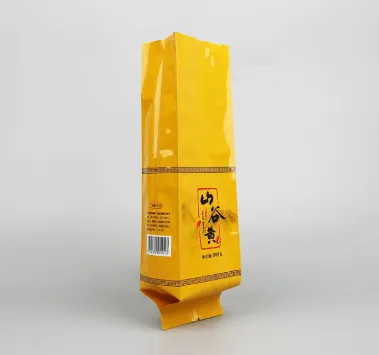Composite packaging, As the name suggests, it refers to a packaging form composed of two or more different materials. It cleverly combines the advantages of different materials, aiming to provide better performance than single material packaging, thereby better protecting goods, extending shelf life, and reducing environmental impact. Composite packaging has been widely used in fields such as food, medicine, and electronic products, and occupies a pivotal position in the modern packaging industry.

There are many types of composite packaging, including paper plastic composite, aluminum-plastic composite, paper aluminum-plastic composite, etc
Different composite methods endow packaging with different characteristics. For example, paper plastic composite packaging combines the excellent printing performance of paper with the moisture and oil resistance of plastic, and is commonly used in food packaging. Aluminum plastic composite packaging utilizes the barrier properties of aluminum foil and the toughness of plastic, and is widely used in food and drug packaging that requires high preservation. In addition, with the increasing awareness of environmental protection, the composite of biodegradable materials with other materials has become a new development trend.
The advantages of composite packaging are obvious
Firstly, it can customize the packaging structure according to the different characteristics of the product, maximizing the protection needs of the product. For example, for food that is prone to oxidation and spoilage, aluminum-plastic composite materials with high barrier properties can be used for packaging, effectively extending the shelf life of the product. Secondly, composite packaging is usually lightweight, small in size, easy to transport and store, and reduces logistics costs. In addition, composite packaging can provide more exquisite printing effects and enhance the brand image of products.
Composite packaging also faces some challenges
The most prominent issue is the difficulty of recycling. Due to the composite of multiple materials, separation and reprocessing become complex and even technically unfeasible. This leads to a large amount of composite packaging ultimately being buried or burned, causing pollution to the environment. In addition, some composite packaging may use materials that are harmful to the human body, and if not properly controlled, may pose potential risks to food safety.
In order to overcome the challenges of composite packaging, the industry is actively exploring new solutions
On the one hand, by developing composite materials that are easy to separate and recycle, such as using biodegradable adhesives or designing simpler composite structures, the recycling rate can be improved. On the other hand, strengthen the supervision of composite packaging materials to ensure their compliance with safety standards and avoid the use of harmful substances. In addition, promoting the use of reusable packaging and encouraging consumers to reduce the use of disposable packaging is also an important way to reduce the environmental impact of composite packaging.
In summary, composite packaging, as an important form of modern packaging, has significant advantages, but still faces severe challenges in terms of recycling. Only through technological innovation, policy guidance, and joint efforts from consumers can we overcome these challenges, fully tap into the potential of composite packaging, and achieve sustainable development. In the future, more environmentally friendly and recyclable composite packaging will become the mainstream of development, helping to build a new pattern of green and environmentally friendly packaging.
Composite Packaging FAQs
What is Composite Packaging?
Composite Packaging is a packaging form composed of two or more different materials (such as plastic, aluminum foil, cardboard, etc.) combined through lamination, co extrusion, or coating techniques. This structure combines the advantages of various materials, such as:
Plastic (moisture resistance), aluminum foil (light and oxygen resistance), paper (printability).
Soft packaging commonly used in industries such as food, medicine, cosmetics, etc. (such as snack bags, beverage boxes).
What are the main advantages of Composite Packaging?
Multifunctional: It combines barrier properties (moisture-proof, oxygen resistant, UV resistant), mechanical strength, and aesthetics.
Lightweight: lighter than single materials such as glass and metal, reducing transportation costs.
Extended shelf life: Multi layer barrier protection for contents (such as vacuum packaged food).
Design flexibility: capable of printing complex patterns to enhance brand appeal.
What are the typical application scenarios of Composite Packaging?
Food industry: fast food bags (instant noodles), sterile liquid packaging (milk cartons), coffee aluminum foil bags.
Pharmaceutical industry: drug blister packaging (aluminum+PVC), moisture-proof drug bags.
Daily chemical industry: Toothpaste tube (aluminum-plastic composite), shampoo upright bag.
What are the main challenges faced by Composite Packaging?
Recycling challenge: The material is difficult to separate, resulting in a low regeneration rate (such as requiring special treatment for aluminum-plastic composites).
High cost: The production process of multi-layer structures is complex, and the cost of raw materials is higher than that of single materials.
Sustainability controversy: Some Composite Packaging products containing non degradable plastics are subject to environmental regulations.
How does Composite Packaging adapt to environmental trends?
The industry is improving through the following ways:
Recyclable design: using a single material composite material (such as a fully PE structure).
Biobased materials: adding PLA (polylactic acid) or cellulose coating.
Chemical recycling technology: such as depolymerization reaction to separate aluminum-plastic layers.
Policy response: Complies with regulatory requirements such as the EU SUP ban and China's "plastic restriction order".